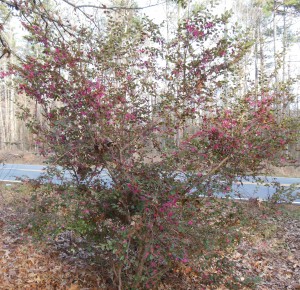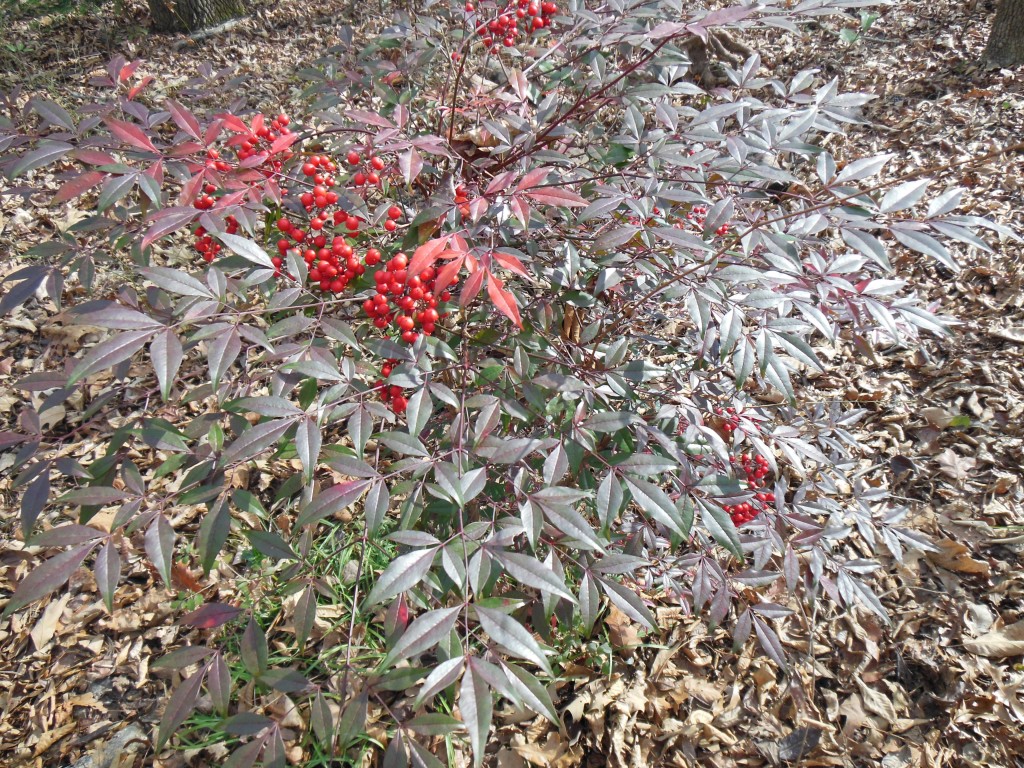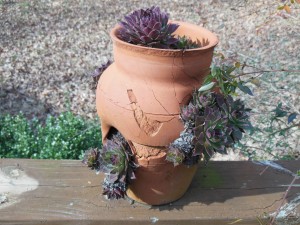I was shocked to see my huge, 10 ft tall by 6 ft wide, Loropetalum in full bloom so early. The extra warm weather a few weeks ago may have brought this about. I jogged back up the driveway to get my camera and captured this.
Also called Fringe Flower, this beauty is related to Witch Hazel. There are many shapes, sizes and varieties of this great plant. On the left, the 10 ft. monster, badly needing a pruning when finished blooming. The other is a 10 inch tall dwarf, weeping variety. One of my few purchases, I planted it under the Crabapple Tree this past spring. It should only get 2-3 ft. tall.








